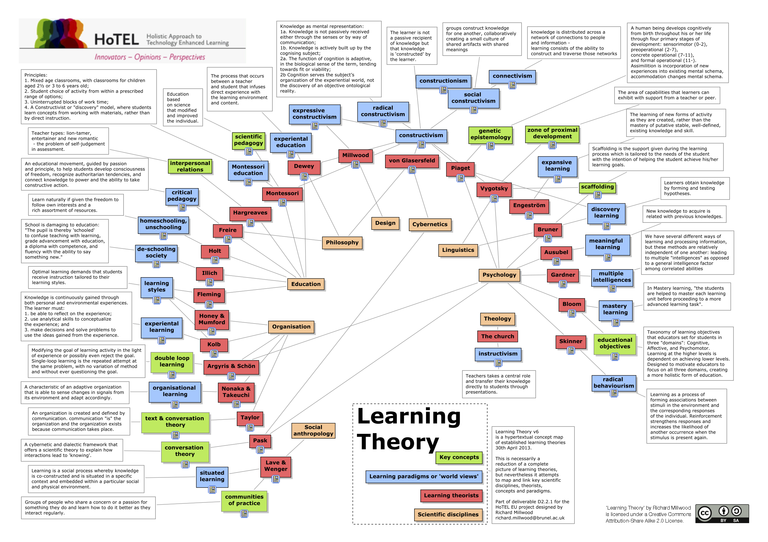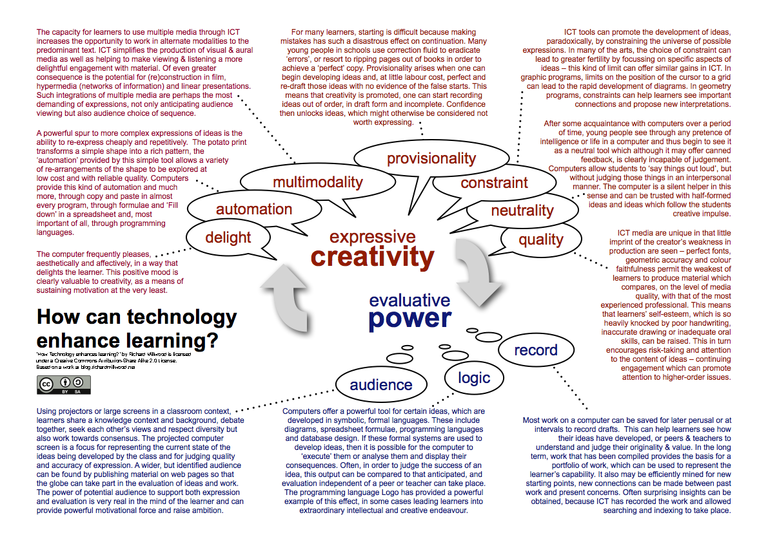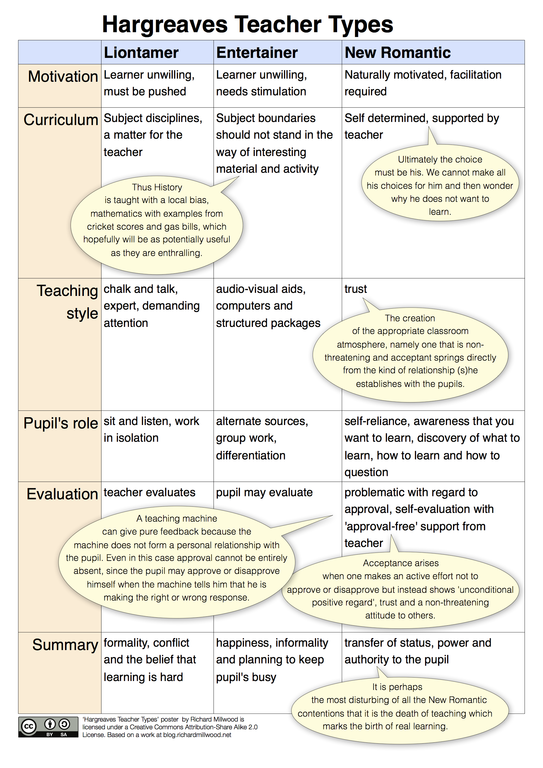Theoretical & Conceptual Framework
Overview
Figure 4: Conceptual framework for this thesis
The authors that surround the four concepts, shown in Figure 4, are the most significant of those that have provided me with theoretical insight, foundation and explanation for the development of my own understanding.
My increasingly responsibility in rôles as a teacher, software developer, media designer, team leader and director together with a natural proclivity to be reflective practitioner, has broadened and deepened my understanding of the factors which lead to effective design methods and criteria for improving design quality in iterative design cycles.
Much of this understanding began as tacit in nature, but as I have had extensive opportunity to present work at conferences and workshops, I have made improving explanations of these factors and criteria to create my own theoretical framework in four key analyses, all of which are intended to inform my concept of design:
- [A1] Expressive constructivism - a creative and constructivist view of learning itself, founded on my concept of learner;
- [A2] How can technology enhance learning - some of the key contributions technology can make to learning, founded on my concepts of technology and learner;
- [A3] The learner at the centre - a learner-centred, holistic view of the decision points in education, founded on my concepts of learner and education;
- [A4] Stakeholder perspectives in education - the perspective of issues in education from some other key viewpoints - the teacher and the organisation, founded on my concept of education.
These analyses have been used to steer my design decisions made throughout 36 years of practice. As such they are a development of theories-in-use, and their articulation here espoused theory in Argyris and Schön's terms (1978)
(Words: 383 )
Design
Definitions
Design as a verb entails the process of imaginative formation of an entity. In the context of education, the entity, which may be as simple as a text or as complex as an organisation, may provide a response to some or all the key questions to progress learning, from motivation to recognition ([A3] Millwood 2009, The Learner at the Centre). Design as a noun is concerned with the specification of such an entity. A more formal, nuanced and rich definition can be found in Ralph and Wand (2009), but is beyond the scope of the pragmatic view I have taken.
The verb design in my practice is an iterative process of development, accompanied by trialling, feedback and evaluation to determine the focus for further improvement. The mutability of designs may be promoted by their expression in computer formats, which offer ready correction and change. With the advent of computer programs, many designs can be expressed in the computer language or information system directly, although not all such languages make such designs accessible. This is the domain of Learning Design (Koper 2006), where one possible benefit is that the design may become enacted through the computer to guide a student on a learning trajectory, but this is not territory which I have explored in any detail in my practice, preferring designs to provide infrastructure and tools for human decision making in a freer sense. I regard learning as less likely to succeed when too tightly prescribed and in its nature, more of a creative activity which benefits from openness in outcome rather than to be restricted to such sequences with too closely focussed learning outcomes.
In my practice the designed entities have all employed some element of computer technology to enhance learning. In my conception of design as a noun, it is a mutable specification:
a representation of teaching and learning practice documented in some notational format so that it can serve as a model or template adaptable by a teacher to suit his/her context
Agostinho (2006)
I would extend this definition so that a design may be that of an information resource, tool, activity, environment or educational organisation. I have learned and employed a wide range skills including composition of words, graphic design, desktop publishing, video editing and computer programming. I have tackled the design and making of computer programs, web sites, films, furniture, office spaces, online spaces and rooms to support education.
Design Science
Defined by Buckminster Fuller (1963), Design Science brought systematisation to the design process, and became understood as the scientific study of design (Gregory, 1966).
In the context of education, Mor explains it well:
A design science of education should be based on a linguistic framework which offers an intermediate level of systematisation, rising above anecdotes but remaining grounded in reality. Such a framework would allow us to capture the structure of educational situations, the challenges they engender, as well as the means of addressing them, in forms which should empower learners and teachers to control their practice as much as it allows researchers to inspect it scientifically.
I would extend Mor's view to say that a design science of education might also encourage creativity in the attempt to transform education for the better.
Complexity and iteration in design
Educational designs I have engaged with have been complex and iterative, and in a research context could be considered as design studies as described by Shavelson et al:
Design studies have been characterized, with varying emphasis depending on the study, as iterative, process focused, interventionist, collaborative, multileveled, utility oriented, and theory driven.
(Shavelson et al. 2003)
The iterative view of design (the verb) is not opposed to a design process base on architectural/engineering specification, where well known and predictive calculations can be made to find the exact dimensions and materials to create a building or bridge. Instead, the iterative view recognises the unpredictability of the design of education where people, their diversity, complexity and culture are part of the design space, not simply users of an end product. It is not enough to design a computer program which performs to specification, tests correctly and is viewed as satisfactory - in education such software is subject to the richness of human discourse, re-interpretation and creativity. In the process of iterative design, such issues can be explored and the design improved with the evidence gathered to make the most effective educational outcome in a dynamic context.
(Words: 821 )
Learner
Introduction
This section focusses on the learner perspective that informs my practice. The learner in my practice has been central to improving the design of materials and courses which aim to support the development of learners' knowledge.
Learner's Knowledge
Knowledge is a term that is naturally confused in definition, between the kind of knowledge which individuals have in their head in order to think, perform and make decisions, and that which is shared in speaking, writing and other media and used by society to coordinate meaning and action. I prefer to consider the first as primary, and analyse it below by dividing it into facts, skills, mental models, strategies and attitudes, all of which are of course intimately connected. The secondary, externalised or articulated knowledge, is not normally functional independent of human interpretation, but is essentially information, which in some cases can be formally expressed in code and is then capable of computer processing.
1 Facts
In my view 'facts' are the simplest form of knowledge that enable the learner to respond to simple questions of definition. In logical terms, they represent connections between two or more atomic concepts, for example 7 times 8 is 56 connects 7, 8 and 56. Such facts are interconnected with others, such as 56 divided by 8 is 7 and thus can become metal models. They are important in that they empower higher order knowledge, but becoming less vital as we are increasingly supported by technology in the form of calculators, online dictionaries and searchable information. Performance is shown by recall or recognition of sounds, acts, definitions or simple relationships.
2 Skills
Skills are the standard, well-established procedures to be carried out by the learner when applicable situations are recognised. Performance is demonstrated by carrying out the procedure in front of others or by recording steps in the process.
3 Mental Models
Mental models are complex and dynamic relationships which can be employed to explain and predict more complex issues and may be based on networks of facts and skills.
My design practice has developed with the fundamental assumption that mental models (Craik 1943; Johnson-Laird 1983) are the basis of an individual's knowledge. Facts and skills could be argued to be the simplest mental models, but I prefer to identify them separately and as building blocks.
My belief in the importance of mental models to educational design is based on Donald Norman's view:
In interacting with the environment, with others and with the artefacts of technology, people form internal mental models of themselves and of the things with which they are interacting. These models provide predictive and explanatory power for understanding the interaction.
(Norman 1983a, 7)
I contend that mental models enable explanation, prediction and thus decision-making and action in a much wider sphere than Norman's focus on the interaction with technology. Nevertheless, it is in the practice of developing better user-interfaces in educational software that my journey as a practitioner started. I found that by extending the concept of mental model to embrace a wide variety of modalities (sensory modes such as sound, vision, touch) and genre (expressive modes, such as narrative, diagram, play or poem), it could provide a basis for understanding learners' knowledge in all its guises.
I accept the constructivist view, that knowledge is created in the mind of the learner by their own mental activity in response to experience and information (Kolb 1984). In my view, at the heart of this is the establishment and improvement of mental models.
Mental models are not only faulty (as they continue to develop through refinement), but also unconscious in the sense that they may be unknown and even their nature unknowable to the person employing them. Nevertheless they may provide effective capability and thus form the basis of tacit knowledge (Polyani 1966).
Observing mental models
I do not believe that it is fruitful, especially for the design practitioner, to spend too long identifying mental models' structural properties nor attempting to use mental models as a basis for formal prediction or explanation. In my view, the biological representation and processing of mental models, in both the network and dynamics of the neural connections in the brain or the phenomenology of the mind, is simply too complex, diverse and subtle. To add further futility (or utility if this is seen instead as a teaching strategy), the act of discovering mental models, through dialogue with learners, can change the mental model itself. (Rogers et al. 1992).
Further research in this area may be ultimately successful, but is a diversion in terms of my design practice. Clarity about the neural structure of the brain may indicate useful design issues, but often on a different level than that of thinking and learning. I suggest we can only objectively deduce the strengths and limitations of mental models by observing and analysing human behaviours, verbal utterances and written or graphic articulations - expressions. This inability to more directly observe mental models does not lead me to reject mentalism, the study of mental perception and thought processes, as Skinner might (Hill 1984, 63-87).
Introspection and self-report
Instead, in my design practice I have favoured a more subjective lens for examining mental models through introspection (Kind 2005), the self examination of thoughts and imagination which can support our understanding. This kind of self-report is, I believe, no more or less useful than any other evidence we gain from human behaviour, and clearly needs to be handled with care. Nevertheless, table 3 lists some examples of mental models and distinguishes between mental models (learner's knowledge) and externalised conceptual models (information).
Table 3: Examples of Mental models
| Mental model | Description |
|---|---|
|
Visualisation of a number line |
In my own experience, I am aware that I imagine a timeline of numbers when comparing numerical values, which I suggest has grown organically as I have developed numerical understanding. The numbers 1 to 10 are arranged in a semi-circle with a slightly tighter bend after 5. Another sharp bend between 10 and 12 leads to a gentle spiral from there until 30 after which an even more gentle curve leads to 100. After 100 a final line, almost straight, leads to 1000 and beyond. Other numerical contexts such as temperature, time and calendar dates, offer other shapes to the line and with significance perceived at key points by bends - 32 degrees Fahrenheit, 100 degrees centigrade, 0 degrees Kelvin, breakfast, tea-time, midnight, December 31st/January 1st, the centuries.... These mental models help me to estimate values and relate numerical symbols to real-world phenomena and decision making. If I attempt to draw this model on paper, as a conceptual model, it soon fails, since the mental perception often defies three-dimensional space, showing and revealing features dynamically as needed. |
|
Arithmetical facts, e.g. 7 x 8 = 56, 56 ÷ 8 = 7 and |
These three number facts are combined as part of a bigger mental model for me - someone who was successful at memorising multiplication tables from an early age. An external representation would be in the form of a concept map relating the three numbers 7, 8 and 56 as nodes with directional arcs labelled with the relevant mathematical operations. The full model takes in all the factors up to 12 - in my day you learnt up to the 12 times table - and some other exceptional numbers beyond. A relationship with other number facts ( 70 x 80 = 5600) where other rules and patterns extend the basic multiplication table. I have no idea how this material is actually formulated in my mental model, it is recalled unconsciously, but I believe it is both parsimonious and effective for me because of its cross connections. The mental model helps me both predict and explain arithmetical results, estimate calculations and solve numerical problems. Externalised conceptual models which are often drawn include number squares, but the graphics do not make clear all the patterns and connections held in a complete mental model. |
|
The effect of flattery |
This complex mental model helps with other people's reaction to my behaviour. Through it I can predict how well received a comment about someone's performance, appearance or feelings might be, and thus choose my words carefully to achieve the effect I desire. It can go wrong and has often lead to doubt about my ability to make these judgements. It can be effective in forecasting behaviour or just as often, dissecting the reasons for upset. It is symptomatic of autism that this kind of modelling is poor. Externalised conceptual models for this can be found as narrative in literature, plays or films. |
|
Catching and throwing a ball |
The capacity to predict where a ball will be, and at what time, after being thrown by a distant person is good example of unconscious, and quite likely unknowable, mental model. Its converse and, I suggest, closely related mental model is that of throwing a ball to arrive at a particular place at a particular time. Externalised conceptual models for this capability are rare and these capabilities often remain tacit knowledge. |
|
The Bohr model of the atom |
Unlike the previous example, which was primarily about prediction, this is a mental model primarily for chemical explanation. It is a picture of orbiting electrons imagined as moons around an 'earth' which represents the atomic nucleus of protons and neutrons. It can be extended to imagine more complex orbital patterns and rules for the number of electrons at each level. Limited predictions can then be made to imagine new elements and chemical bonds between atoms. This articulation does not mean that this is exactly how the mental model is formed in the mind, but the gravitational and geometrical parallels to actual atomic forces provide a visual and visceral way to know about atomic particles, although incomplete and a fiction! An externalised conceptual model in the form of a diagram (or animated film) can be drawn - this can become a shared articulation helping to develop and align each individual's mental model. |
| How do I get to the station? |
On many occasions, I have travelled from a railway station to a conference venue. My ability to return to the station is based on the mental model built on the journey, which in my case is considerably richer than a turn-by-turn account of street corners. The model is used to make decisions and affords flexibility, rather than simply followed by inverting the turns made on arrival. Its representation as an externalised conceptual model might be a map, but this only captures part of a more complex 3D visualisation and relationship with a body-centred decision making procedure. |
These examples are important to me in my practice because they differentiate between the idea of mental model and that of externalised conceptual model. The latter is a shared articulation of knowledge, often in oral, written or diagrammatic form (including a map) which tries to capture the essence of mental models so as to communicate knowledge.
4 Problem solving strategies
This form of knowledge is the basis of analysis and creativity and may involve the application of mental models. I argue that the key capabilities are those of recognition, open-mindedness, backtracking and re-formulation. My own work in this area resulted in a published paper to identify the steps that the learner would need to undertake to formulate computer models (Millwood and Stevens 1990), based on the experience gained in formulating the Modus project to design modelling software:
- identifying a purpose;
- having concern for presentation and communication;
- constructing an interactive simulation;
- picturing the end-product;
- dentifying elements;
- characterising elements;
- identifying relationships and
- characterising relationships.
5 Attitudes
Learning attitudes are often the 'soft' and unrecognised aspects of knowledge in the learner, and not tested directly through summative assessment. I would argue that attitudes to be developed include determination, motivation, love of subject and a concern for quality & detail. Successful learners may also be patient, optimistic and persevering (Seligman 1998). A substantial development in my thinking in relation to attitude, inspired by collaboration with Stephen Heppell, was the concept of delight. The challenge to script and present a Teacher's TV programme, Happiest Days? (Millwood 2006), was the starting point for my own delight framework An Analysis of Delight (Millwood 2008) based on John Herons work (Heron 1992), which I articulated to explain and justify design choices in technology-enhanced education.
This view of the learner and the range of types of their knowledge helps me as a designer to identify how technology enhanced educational innovations can support learning and offer a critical framework within which improvement to designs can be made based on a static understanding of what is to be learned. But the dynamic processes of learning, as described by learning theorists in the next section - The challenge of Learning Theory, provide such a rich and challenging picture, that to be pragmatic in my design practice, beginning in 1986 with membership of the [C4] London Mental Models Group, I have drawn on such theories to develop a simplified analysis outlined in the section following - [A1] Expressive Constructivism.
(Words: 2374 )
The challenge of Learning Theory
Figure 5: Learning Theory
This concept diagram (Figure 5) and notes below are taken from the work I undertook to complete an overview of learning theory for the EU-funded HoTEL project in 2013, intended to help technology enhanced learning innovators untrained in educational theory to make better sense of theory in order to improve their designs and the impact of their innovations.
"Learning theory has been a contested scientific field for most of its history, with conflicting contributions from many scientific disciplines, practice and policy positions. With the continuing and disruptive influence of technology on information, knowledge and practice in all sectors of society it is no wonder that innovators, drawn to the interactive potential that computers bring to learning, are challenged by the theoretical basis for their innovations.
Formal education is also a high stakes, culturally & institutionally conservative activity, which serves more than one societal purpose, including:
learner development and fulfilment; child care; preparation for citizenship, parenthood and retirement; preparation for work; selection for jobs.
Even in the higher, informal and professional sectors of education, complexity of education is matched by complexity of learning outcomes which may include:
skills development; knowledge acquisition; improvement in strategic, analytic and creative capacities; attainment of competence; establishment of attitudes and values.
Each of these societal purposes and these learning outcomes demand different approaches and understandings for the theorist and may develop at varying rates or found to be diverse in relation to context, location and culture."
Millwood (2013)
In these circumstances, I as a designer have had to create a theoretical position which draws from the best, yet can provide a more straightforward basis for design decision-making - this position is explained in the next section [A1] Expressive Constructivism.
(Words: 406 )
[A1] Expressive Constructivism
A basis for a pragmatic learning theory
The iterative process of production of expressions and their evaluation (described in detail below), I contend, is a model of learning that helps the educational designer make effective decisions by examining their designs for technology support for both expression and evaluation. This way of looking at learning was first inspired by the analysis of a single interaction (Millwood and Riley 1988), after (Norman 1983b), extended by a reduction of the four stage cycle (Kolb 1984) and supported by the radical constructivist perspective (von Glaserfeld1995).
Von Glaserfeld viewed:
Knowledge as mental representation:
1a. Knowledge is not passively received either through the senses or by way of communication;
1b. Knowledge is actively built up by the cognising subject;
2a. The function of cognition is adaptive, in the biological sense of the term, tending towards fit or viability;
2b Cognition serves the subject’s organization of the experiential world, not the discovery of an objective ontological reality.
(von Glaserfeld 1995, 51)
My expression / evaluation hypothesis holds that expressions are made continuously as an innate activity of the human condition - as if there were an internal 'fountain' of mental and physical expressiveness. Sometimes such expression is driven by internal motivation and at other times by external stimuli, and it can even be argued that it encompasses the imaginative, information-processing basis of perception, which far from being a passive act, can be seen to be a constructivist response to the raw data arriving at retina, eardrum, inner ear, skin, muscle, mouth and nose (Marr 1982 pp 329-332).
Similarly the evaluation question 'is it right?' is frequently experienced as we wonder whether we have understood or articulated well and thus struggle for clearer and better expressions.
Validity and reliability for the practitioner
As a designer, this model has supported my practice by focussing my attention on how to make expression more creative and evaluation more powerful, and has been refined through regular exposure in conference settings. It relies on the literature cited above and my own experiences and observations in practice for its validity and reliability. Nevertheless I have found the analysis to work, and have observed and filmed the expression/evaluation loop in practice, as evidenced in these films transcribed below of children working at the computer together:
Figure 6: An example of expression and evaluation in conversation
In this example (Figure 6), Sasha is expressing his thinking about the way the game works explicitly using natural language to his brothers. After several turns through the loop re-expressing on the basis of his own evaluation listening to his own words (although seeking the others' evaluation), eventually his brother evaluates his words.
Patrick - I'll die if I go down there!
Sasha - Like getting damaged. Getting all the way damaged do you mean? Getting damaged.
Sasha - Do you know when you die? You die when you get all damaged, is what it means, when it all gets red or the green turns into red.
Sasha - The red is damage and the green isn't damage. Do you understand?
Sasha - When you get all damaged then you die, is that right Patrick?
Patrick - Yes, yes that's right.
Figure 7: An example of meta-level learning in conversation
In this second example (Figure 7), Sasha explains how he came to know about the game by repeatedly playing a section. This simple meta-level learning shows that he knows something more than the game, that he is aware of his own processes of learning.
Sasha - That's right, when you get down there you can just go from there and then straight down to there without a single damage.
Sasha - And do you know how I know that?
Sasha - Because I tried it several times - that's how I know.
Patrick - That's very good, thanks Sasha!
Figure 8: An example of expression, constrained by programming, and evaluation by computer performance
In this third example (Figure 8), Sasha uses the computer (a small robot) to evaluate his expression of the algorithm for making a zig-zag path like 'steps'. He is constrained to simple statements - move forward, turn left 90˚, turn right and start. He enters the algorithm into the robot and then sits back to watch its execution. If there is a mistake in his expression, it will be indicated by unexpected behaviour by the robot, thus offering a clue to the correctness of his algorithm and mental model. The opportunity to repeat this experience, and make sense of his ideas without interpersonal judgement can provide a useful learning opportunity and also a platform for further engagement with peers or adults.
In tables 4, figure 9 and table 5, the following types of expressions and evaluations are proposed: internal, natural and formal, each overlapping and extending the other:
Table 4: Types of Expression
| Internal expression | Natural expression | Formal expression |
|---|---|---|
|
Thinking a thought in response to listening, watching or reading. This kind of expression is conscious thought, frequently, but not exclusively, in the form of internal linguistic statements and arguments. Other forms include the imagination of bodily acts, the visualisation of scenes statically and dynamically or the feeling of moods. |
Speaking, playing, performing or doing. These expressions are made outwardly and form part of a communicative act to others (or possibly to oneself, if thinking or acting 'aloud'). There is an extra demand on expression to be coherent, meaningful and effective - some preparation in thought is demanded and in this sense, natural expressions overlay internal expressions.
|
Writing, drawing, proving, planning or computing. Formal expressions use visual symbols, formalisms, syntaxes and grammars whether in written language, diagrammatic convention, logical argumentation or in programming vocabulary. There is a further demand placed on the individual making such expressions, that of complying with the formalism. As before, formal expressions overlay the internal and natural expressions and at times may be hard to distinguish. |
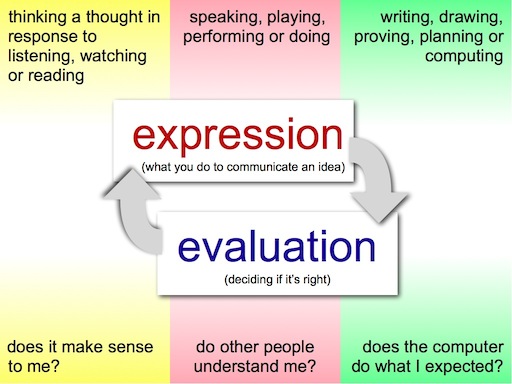
Figure 9: The expression / evaluation loop
As expressions are made, they are evaluated in order to decide of they were 'right':
Table 5: Types of evaluation
| Internal evaluation | Natural evaluation | Formal evaluation |
|---|---|---|
|
Does it make sense to me? This evaluation is carried out in the mind, considering the expression's quality through processes of recalling memories, analysis and enacting mental models. A major part of this kind of evaluation can be the imagined response of others to the expression or the application of logic of formal systems thus overlapping or substituting for the natural and formal evaluations. |
Do other people understand me? In addition to one's own thoughts ann expression may have a response from another, a group or an audience. In the best cases new challenges may be encountered or suggestions for improvement offered. Moral support for continuing the cycle is also possible in natural evaluation.
|
Does the computer do what I expected? If the expression has been articulated using formal systems, an evaluation can be carried out if the expression is 'executable' - enacted by computer in the most extreme case or performed by other people in the less formal case of recipe, musical composition or play script. |
Whichever kind of evaluations are employed, new expressions are generated - often with improvements in areas identified by evaluation - and the cycle continued until satisfaction or distraction intervenes. It is my belief that this cycle leads to the improvement of mental models, whether they are of the simplest of factual relationships or the richest of human behavioural situations.
The expression / evaluation model, which I have termed 'expressive constructivism' has been the explicit basis for decision making and a source of directions for improvement in my design practice to consider how technology can enhance learning since 1986.
(Words: 1445 )
Technology
Technology in education is often positioned as its servant, a tool to help achieve pedagogic ends already determined without technology. Although there is merit to be driven by educational needs when employing any resource, this position can be questioned in the light of technology's relationship with humankind more generally. As Stan Owers pointed out in his PhD study:
The literature research confirmed that technology is as old as humankind. The foundations of technology resides in our imaginative capabilities as toolmakers. Humankind has always used tools, and recently technologies, as extensions of itself. Tools and technological evolution have been constant companions to the evolution of humankind.
(Owers 2001, abstract)
Owers' point of view, that technology extends humankind and has been a constant companion in evolution, suggest that we look for extension to education through technology, not simple service to education. Educational software has the capacity to support new pedagogies, and this has been recognised since the 1970's as evident in the analysis offered by McDonald et al, as tabulated by me in table 6 (Millwood 1987), to identify the computer's potential contribution through three paradigms: instructional, revelatory and conjectural.
Table 6: Educational Paradigms for Computer Assisted Learning
|
INSTRUCTIONAL |
REVELATORY |
CONJECTURAL |
|
|
Key concept: |
Mastery of content. |
Articulation and manipulation of ideas and hypothesis-testing. |
Discovery, intuition, getting a 'feel' for ideas in the field etc. |
|
Curriculum emphasis: |
Subject matter as the object of learning. |
Understanding, 'active' knowledge. |
The student as the subject of education. |
|
Educational means: |
Rationalisation of instruction, especially in terms of sequencing presentation and feedback reinforcement. |
Manipulation of student inputs, finding metaphors and model building. |
Provison of opportunities for discovery and vicarious experience. |
|
Role of computer: |
Presentation of content, task prescription, student motivation through fast feedback. |
Manipulable space/field/'scratch pad'/language, for creating or articulating models, programs, plans or conceptual structures. |
Simulation or information handling. |
|
Assumptions: |
Conventional body of subject matter with articulated structure; articulated hierarchy of tasks, behaviouristic learning theory. |
Problem-oriented theory of knowledge, general cognitive theory. |
(hidden) model of significant concepts and knowledge structure; theory of learning by discovery. |
|
Idealisation / Caricature: |
At best, the computer is seen as a patient tutor; at worst it is seen as a page turner. |
At best, the computer is seen as a tool or educational medium (in the sense of milieu, not communications medium); at worst, as an expensive toy. |
At best, the computer is seen as creating a rich learning environment; at worst, it makes a 'black box' of the significant learnings. |
McDonald et al also propose a fourth paradigm, the emancipatory paradigm, in which the key concept is the reduction of inauthentic labour, but this does not occur in isolation to the three paradigms initially defined, since each reduces such labour to some extent.
This analysis was hugely influential in the 1980s, often cited by students exploring the possibilities of technology, but as time passed and new capabilities of the technology available were developed, I found the need to clarify the potential contribution made by technology in learning as set out in the next section.
(Words: 888 )
[A2] How can technology enhance learning
The expressive constructivism model of learning directs my attention towards the learner as an active, creative individual who is best served by tools for expression on the one hand and by tools for evaluation on the other.
This forms the basis of this analysis of key features of technology (the terms in the speech bubbles) that might enhance expression and evaluation. In turn this clarifies the basis for choosing aspects of technology to incorporate into designs, and to see what might be missing. The analysis also acts as a framework for decision making when comparing technologies for their likely effectiveness in learning situations.
Figure 10: How can technology enhance learning? (Millwood 2012)
(Words: 185 )
Education
Teacher and Learner
In the early years of my design practice, I focussed on learning in the microcosm of the individual learner. Even within this context, my attention was on the use of the computer rather than the wider process of education signified by the classroom. When first registering for PhD in 1986, I was invited to produce a qualifying essay (Millwood 1987) which I based on teacher types identified by Hargeaves (1975).
Table 7: Hargreaves' teacher types
This diversity of aims, objectives and values devised by Hargreaves was new for me, not only as a perspective on education but in how the design of technology enhancements might take account of the context of use and indeed support the aims of such de-schoolers as Illich (1970) and Holt (1976). In my essay (Millwood 1987) I made a connection between the paradigms for computer assisted learning and Hargreave's teacher types that helped me understand why teachers might propose designs in different ways according to the predominant teacher type in their practice.
Educational quality and improvement
In producing the CD-ROM for the 'Business of Quality' ( [C6] The Renaissance Project ), an interactive multimedia account of Deming's theories for improvement in manufacturing and business (Deming 1982), I learnt about the notion of quality and how it can be monitored. What came as a revelation was the idea that customers should be delighted, not simply satisfied in order to succeed in competition with other companies. I found these ideas transformative in my own thinking about educational institutions and their improvement, and connected to the social sciences notion of an action research approach with the plan–do–check–adjust cycle. It gave foundation to my later work to design education organisations to be profoundly learner centred ( [C11] TeacherNet UK; [C18] Ultraversity Project ).
Educational community and variety
The development of educational organisations online presented many new challenges to the designer, and tacitly these were solved by encouraging online learning community to develop where peers expected to learn from each other as well as from content, experts or tutors. This thinking became clearer when contrasting the [C18] Ultraversity Project and the [C20] Inter-Disciplinary Inquiry-Based Learning (IDIBL) project. The first was considered highly successful and the second struggled to make headway. By applying the concept of 'variety' in the context of Cybernetics (Beer 1985; Ashby 1956), it was clear that the successful design benefitted from the absorption of variety in student states by inviting them to build relationships of mutual respect and support with each other. This meant that the facilitation team, tasked with leading the community, were able to manage the variety that remained without being swamped with diverse questions and problems (Millwood and Powell 2011).
Educational design
In my practice, applying the ideas of design to education was initially tacit in nature, but later influenced by the explicit principles developed by theorists such as Gagné (1985). These are based on an analysis of instructional events (and corresponding cognitive processes):
- gaining attention (reception)
- informing learners of the objective (expectancy)
- stimulating recall of prior learning (retrieval)
- presenting the stimulus (selective perception)
- providing learning guidance (semantic encoding)
- eliciting performance (responding)
- providing feedback (reinforcement)
- assessing performance (retrieval)
- enhancing retention and transfer (generalization).
But these events are focussed on what the teacher should do, with the assumption of a Hargreaves 'lion tamer' or 'entertainer' style. It also focusses on the lesson, rather than the complete scope of educational experience for the learner. This led me to analyse education from the perspective of the learner, which is the subject of the next section.
(Words: 746 )
[A3] The Learner at the Centre
Focussing on the learner's perspective meant imagining a complete set of essential questions that they need answers to in order to progress in education. Normally these questions are not asked, the answers are simply supplied by the educational organisation. But by taking this perspective, gaps in the designs I developed for educational organisations could be identified and closed in the development process. For example, a design may make provision for formative assessment (7 Assessment, in the analysis) but forget that it may also be important have some means to gain an award (8 Recognition) through summative assessment.
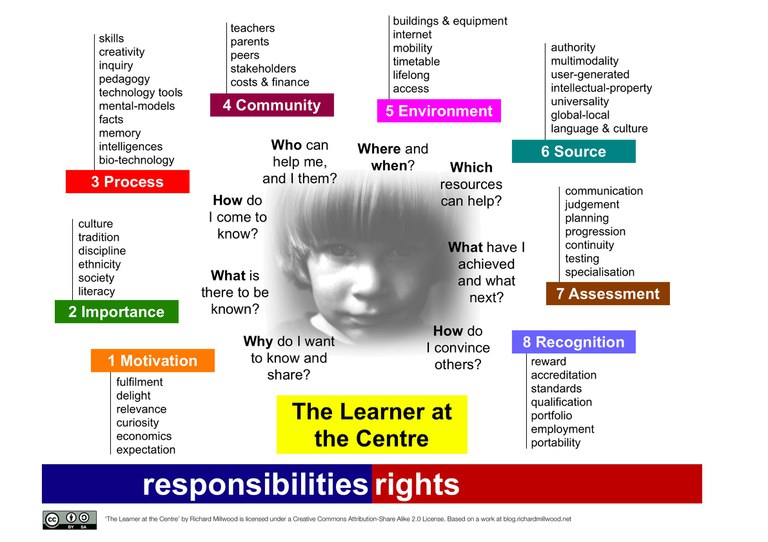
Figure 11: The Learner at the Centre
Few real learners will articulate such concerns in the form of questions, partly because we usually do not ask them to participate in such issues, but by posing these questions as ‘constants’ we may test future proposals more effectively than starting from the status quo of a current or historical solution. In this diagram, the learner is imagined to be concerned with eight questions, relating to eight areas that an innovator should consider if they wish to make an impact on learning with an invention in technology or practice.
But the issues at the bottom of the diagram – responsibilities and rights – are at the heart of the modern dynamic that education and technology present. Learners’ entitlement to access knowledge was at the heart of the development of the National Curriculum, but we must add to that the entitlement to opportunities for access, creativity and communication and the responsibilities that a free and open education brings.
(Millwood 2009)
The lists of issues related to each question will form part of a future research & development to elaborate this analysis more fully, but the question "Who can help me and I them?" (4 Community) led me to consider the other stakeholders in education, analysed in the next section [A4] Stakeholder perspectives in education.
(Words: 374 )
[A4] Stakeholder perspectives in education
Teacher and Organisation
The analysis 'learner at the centre' cannot complete the designer's toolkit, because of the inter-dependency even the most auto-didactic of learners must have with the teacher (tutor or facilitator) and with the organisation that provides the formal educational elements, particularly the recognition through accredited qualification that can be used by the learner to compete for job or authority in society.
The questions in these analyses are posed to help the developer to consider how a technology-enhanced, learner-centred educational design can meet the needs of teachers and institutional managers when faced with new design issues. Such issues are found as the increasing societal use of technology challenges established authority and increases complexity of inter-relationship between experts and practitioners, as characterised in educational paradigms such as Connectivism (Siemens 2005).
For example, in developing the design for a work focussed learning enterprise, [C18] Ultraversity Project, [C20] Inter-Disciplinary Inquiry-Based Learning (IDIBL), I recognised that little attention was paid to the nature of teacher and organisation in the first project, Ultraversity, since this was already favourably established and a team ready to deliver. When trying to achieve a similar enterprise in the University of Bolton, I realised that the questions in the analysis from the teacher's perspective and from the organisation's perspective needed answers that matched the design's aims, and were not readily found. In this sense these analyses make explicit my linguistic framework for design (Mor 2010), which had tacitly operated in the development of Ultraversity.
These two analyses are more speculative and neither complete nor polished, since they are my most recent efforts in relation to the last decade of practice and have had fewer opportunities for testing and refinement in a practical context.
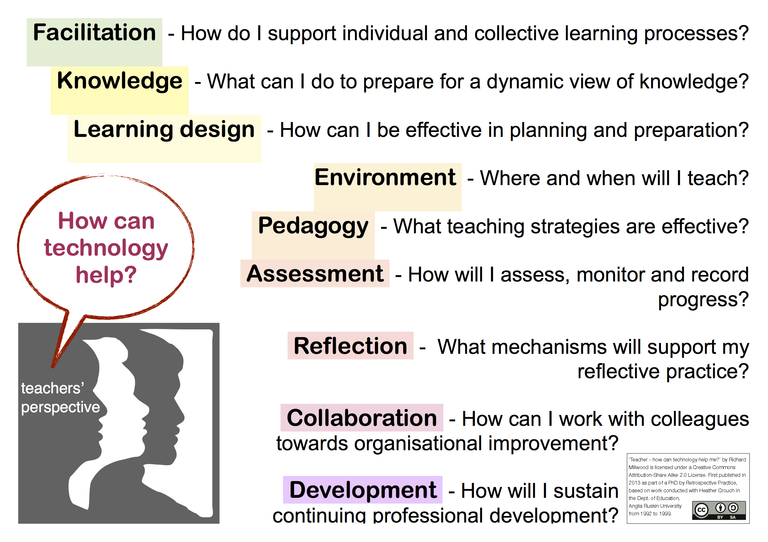
Figure 12: The teacher's perspective - How can technology help?
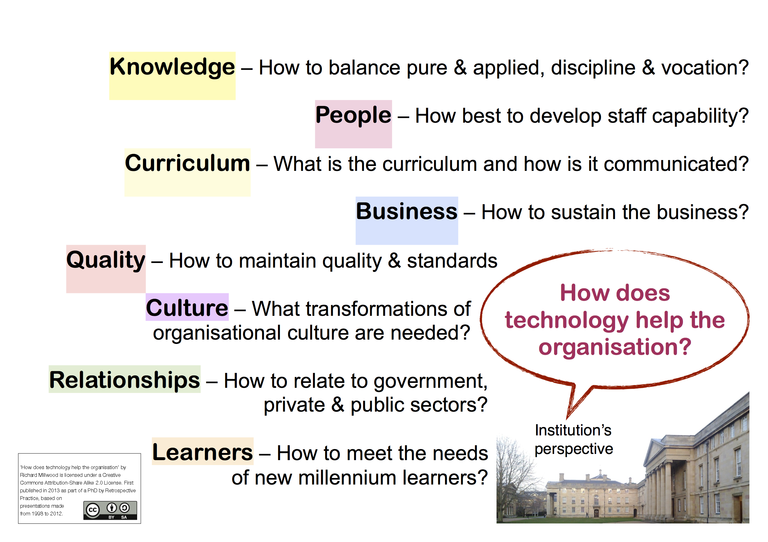
Figure 13: The organisational perspective - How does technology help the organisation?
(Words: 377 )
Validity and Reliability
Nevertheless, the framework has been exposed to considerable 'stress testing' in numerous projects, many on the large scale and the national stage. There is much more to be developed in detail and to find more reliable empirical evidence to make the framework more rigorous, but ultimately there is enough cohesion and precision to make the designer's pragmatic task possible and indeed successful. In this way I would argue that it has strength in validity, whereas reliability with other designers and contexts is yet to be fully established.
(Words: 143 )


